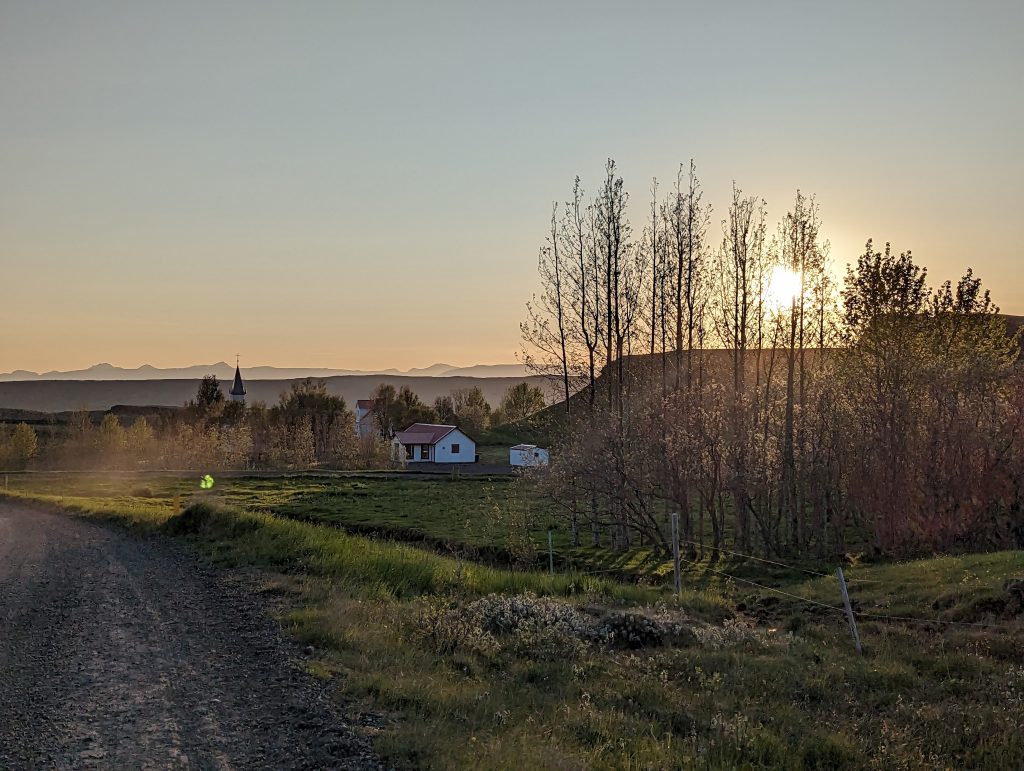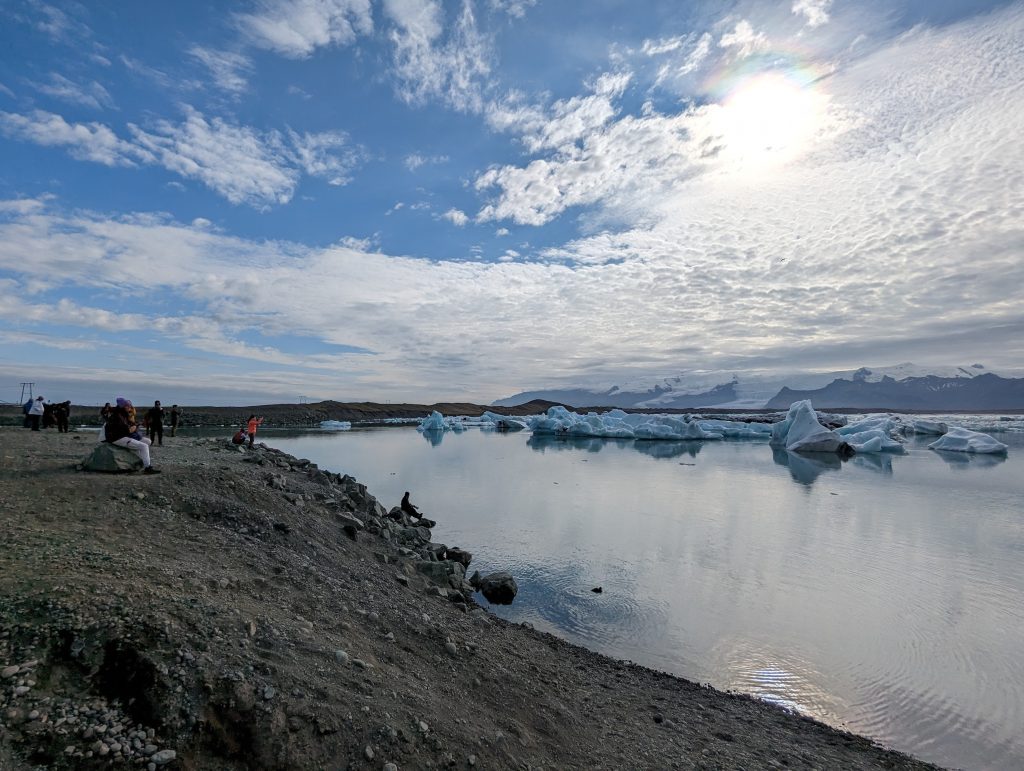How ChatGPT Saved Me While Traveling
Earlier this summer, I went on a trip to Iceland, and, completely unsurprisingly, I have thoughts. I also took a bunch of notes on how I was able to navigate some more complex parts of travel using what has perhaps become my second-favorite travel copilot, a.k.a. ChatGPT 4.0 (the first being my wife, of course). ChatGPT was useful in a number of ways, not the least of which was the fact that Google Translate hopelessly bungles Icelandic translations for a number of reasons, which I’ll explore in more detail later. As long as you have access to internet, it can be a valuable assistant for the relentlessly curious adventurer.
Travelogue: Reykjavik, þú lítur vel út!
Background
If you’re unfamiliar with Iceland, it’s the latest hot destination for travel– literally, in some cases, given the prevalence of volcanos, hot springs, and thermal baths spread out across the remote, North Atlantic island country. Tourism in the country is a relatively new phenomenon, with landings at Keflavik roughly quadrupling from the 2000s to the late 2010s pre-COVID. Icelanders have feelings about this, and it’s very complicated, as it’s brought oodles of money, but also threats to delicate ecosystems, badly behaved tourists, and strain on infrastructure.
In spite of numerous economic and historical connections with other countries, though, Iceland is very much its own thing— not part of the EU, but part of the Schengen. Germanic language but kinda not at all like the other Germanic languages. An impressive music and arts scene, popular nightlife in Reykjavik, and a respectable food scene, plus, of course, a cornucopia of outdoorsy activities to suit any taste, adventurous spirit, or price point. In general, Iceland was far enough away from the familiar confines of the Continent that I needed some assistance beyond some goofy travel article telling me about how I should try the fermented shark.
(Narrator voice: You should not try the fermented shark).

Using ChatGPT to Plan Travel Itineraries
Before we went on our trip, ChatGPT was invaluable for planning. For example, I told it what kinds of things I was interested in doing, and asked it to come up with some ideas. Once I assembled a schedule, it was able to produce hypothetical itineraries for me. While it isn’t Google Maps, it’s able to give you sufficiently exact details about travel times and the destinations themselves, ranging from genericisms like, “this is a popular destination for hikers” to, “you will definitely want to avoid this location if you don’t have an SUV” (valuable input to consider, and a comment that may or may not be listed on Google Maps– and may or may not even be entirely accurate).
Chat also was able to provide me with a lot of information that was enormously useful but impossible to glean from maps or Google Reviews alone, for example, destinations where the famous waterfall required a strenuous hike, versus locations where you could see the feature from the highway, or what have you. In many cases, it’s possible to glean a lot of this information from reading through Google reviews. For example, we visited a few waterfalls that were highly rated, but it was unclear to us why they were more highly-rated than, say, far more dramatic ones. Perhaps the lack of amenities bothered some travelers. This is a good example of how the 1-5 rating system cannot possibly contend with the complexity of the natural and built environment and all of the ingredients that go into why we do or don’t like parts of it.

Beyond being able to tailor (with impressive B+ quality) itineraries and activity ideas for anything ranging from “what could I do on a first date” to “help me figure out a family-friendly Saturday afternoon, with a rain day contingency”, there are plenty of other things you can ask the robot, ranging from banal to more curious:
- “What’s a popular hiking destination that would make for a good day trip from Akureyri?”
- “Where can I go to avoid crowds of tourists?”
- “What is this weird ship graveyard near Grindavik about?”
- “What do Icelanders typically do to manage [x] situation?”
- “Why do I keep seeing signs that say [x], which means [normal thing apparently unrelated to sign]?“
Most interestingly on this last one, Chat was able to provide me a ton of valuable background on cultural context and language to explain things that we saw but didn’t quite get. Most stuff is pretty obvious– the country eats a lot of fish because it’s surrounded by ocean, for example- but some things are not quite as apparent. Like why the customer service in the country is really bad by even European standards. Or certain peculiarities of infrastructure or place that aren’t quite explained by roadside signage.
Language was key here, as Google Translate impressively fumbled a solid third of requests I put in for it.

Providing Cultural Context
Iceland is proud of how long it has been settled– since 872- but this isolation, which also meant that immigration to the island’s harsh climate and remote geographies was limited. So, the Icelandic language developed more or less on its own. Traveling in Iceland had a lot of moments that for me as a fluent German speaker made me do a double or even triple-take (not unlike when I make a funny sound with my mouth and my dog tilts his head at me quizzically). The language is different enough from German that it isn’t remotely mutually intelligible, but plenty of Icelanders speak German (most speak English!), and there was a whole linguistic game of telephone that occurred back when the Germanic languages were all much more closely related many centuries ago.
Speaking one Germanic language and encountering another one in the wild, the brain sometimes responds a bit like Google responding to a mis-typed user query. “Eerste hulp?” Did you mean, “erste Hilfe?”
In any case, Iceland’s geographic distance from its Germanic neighbors– plus a century plus of linguistic and cultural evolution- meant that the language has, like the people of the country that speaks it, kinda just figured it out. This makes a lot of work through Google Translate particularly tough, because things will not come up with direct translations, and Google Translate, ever questing for UX simplicity over accuracy or technical depth, will never provide deeper context. There are also words in Icelandic that Google Translate will attempt to translate word-for-word, but that have completely different meanings. Raðljóst, for example, translates Googlewise as “clearly,” but in Icelandic, it connotes specifically a minimal type of light, like candlelight– minimal, but sufficient to see by. Google did better with the endogenously-developed Icelandic neologisms, but I had to use ChatGPT to explain the concepts behind them (this perhaps deserves a separate article, but it’s similar to how French and Latin have invented new words rather than borrow them).
Google also struggled seriously with compound words, of which there are many (in this way Icelandic is very much a friendly distant cousin to German). It can be hard– even as a speaker of a Germanic language- to figure out how to break these down, but that was where ChatGPT was perfect, because it could explain the breakdown of the compound word while also providing important context and even etymology. Many of our exchanges were something like, “Hey, Chat, wouldn’t ‘this word’ translate to something like this rather than that?” and Chat would respond something like, “You’d think– but actually, that word comes from a Celtic root rather than a Germanic root, ergo […]”

Optimism for the Future of Curious Travel
Anyway, this is probably unnecessary for the average non-nerd traveler, but the speed of ChatGPT and the ubiquity of wireless coverage in Iceland made for a solid value proposition in thinking about how we can be better, more conscientious travelers who are curious about the world, the people in it, and the natural environment. The Luddite among us– usually me, if I’m being honest- might ask why you can’t learn all of this from books before traveling. That’s certainly a great idea, but I figure I could learn just as much from reading Salka Valka as I could from reading the Lonely Planet guidebook.
If you haven’t followed the rest of my writing on AI, I’m cautiously optimistic about the new technology– which I think deserves and will thrive with prudent regulation to protect user privacy and to ensure depth and (equitable) accuracy in training. Travel is an interesting use case for the emergent technology, and it’s not one I’ve actually seen discussed in much depth. I’d like to think that any time we have the opportunity to formulate questions about the world around us and dig into a bit more detail about why something is a certain way, that that’s a good thing. That it can be integrated with a process of somewhat more intentional, automation-assisted trip planning, is an added layer of convenience.



